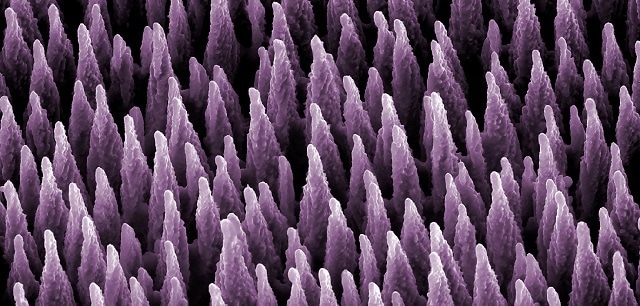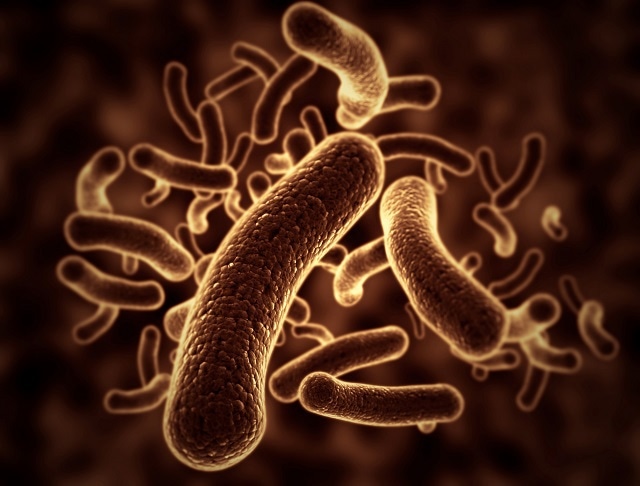
Image Credits: Georgy Shafeev/shutterstock.com
Atomic force microscopy (AFM) is a non-destructive and non-intrusive imaging technique used to visualise the intricate structure of microorganisms such as viruses at extraordinarily high resolutions. Using AFM, researchers can identify and study membranes, RNA and DNA, and protein assemblies and their substructures. It is also possible to visualize the protein arrangement in the capsomeres of virus’s capsids with the help of AFM.
Detecting and Imaging Viruses
The early and accurate detection of viruses is crucial in order to prevent further complications and provide effective treatment in cases of acute infections such as the atypical herpes viruses. The use of AFM to detect viruses plays a key role in the epidemiological or clinical setting, in which a rapid diagnosis is extremely important. One recent example where AFM allowed structural identification of intact virus particles is the H1N1 influenza epidemic in Mexico and the United States in 2011.
A study by Porter and co-workers published in 2006 demonstrated the ability of AFM and other techniques to detect pathogens present in complex biological media. AFM allowed label-free visualisation and the analysis of minute viruses on a smooth surface, which were around a nanometre in size. AFM readouts also aided the optimisation of a substrate for FCV - feline calicivirus, with a detection limit of 3 x 10-6 FCV/ml.
The growth of viruses on infected cells and the unusual morphology of some mutant viruses have also been examined with the help of topological 3D images captured using this technique. AFM also allows the imaging of virus samples on the surface of the cells in situ, in fluids and air, or post histological procedures.
Current Techniques for Detecting and Imaging Viruses
Currently, two key techniques are widely used for the visualisation of viral morphology: electron microscopy (EM) and X-ray diffraction analysis.
X-ray diffraction provides very high resolution images of atomic-level structural details, and in certain cases, can even show the interactions between proteins and nucleic acid. However, there are some limitations when using this technique to study virus structure.
Firstly, the virus needs to be crystallised before applying this technique, which is not possible when studying viruses with complex, asymmetrical structures. Viruses which are large (with a diameter of more than 1,000 Å) cannot be studied using X-ray diffraction. As a result, this technique can be applied only to small viruses having symmetrical structure, although it can be combined with other techniques such as EM or AFM in order to provide more accurate results.

Image Credits: Jezper/shutterstock.com
Electron microscopy (EM) is used to analyse viral structures in two ways: transmission EM and cryo-electron microscopy (cryo-EM). In transmission EM, images of viruses or infected cells on substrates are obtained post thin sectioning, while in cryo-electron microscopy (cryo-EM) several low-dose particle images are reconstructed. Over the years, cryo-electron microscopy has been enhanced using complex mathematical techniques in order to analyse low-dose images.
Transmission EM involves the dehydration, fixation and staining of heavy metals in order to enhance the contrast in images, which is a major disadvantage of using this technique. Cryo-EM also has some short-comings, namely, it is mainly used to study small viruses with icosahedral symmetry and gives an ‘average’ structure and rather than an individual one.
However, cryo-EM can be made more powerful by combining it with other techniques such as X-ray diffraction, although caution should be exercised while analysing the combined results as both the techniques provide static and ‘average’ structure images.
When compared to X-ray diffraction and EM, AFM is a highly promising technique. The major advantage of AFM is its simple physical operating principle. Unlike the other techniques, AFM is inexpensive to install and implement for use on biological specimens, as the microscope is small in size.
How Does Atomic Force Microscopy Work?
The AFM instrument belongs to the scanning probe microscope family and works by a simple principle, although sophisticated techniques such as electronic image processing and piezoelectric technology are required for analysis. An AFM device can be operated in two modes: contact mode and tapping mode.
In contact mode, a silicon probe is kept in contact with the sample surface such as a virus capsid and the AFM probe is mounted at the end of 100 to 250 µm cantilever. As the sample is translated beneath the probe with the help of a piezoelectric crystal-positioned x-y stage, scanning is achieved. The probe tip moves over the surface of the sample without touching it but still interacts with the surface via ‘aggregate atomic forces’.
As the probe interacts with the substructures, it is vertically displaced and the displacements are amplified using a laser beam reflected from the cantilever’s upper surface. A split photodiode detects and tracks these deflections. The deflections are then converted into height information using photoelectric circuitry. The scan data obtained is recorded in the form of a digital topographical image, which can then be converted into different visual formats.
The tapping mode allows the characterisation of soft samples, which might not withstand contact mode operation. This method also prevents issues occurring which might result from electrostatic forces, adhesion and friction. One constraint of this approach is that the liquid specimen needs to stick firmly on the substrate surface, which might require treating the substrate with reagents such as poly-L-lysine.
Interpreting AFM Images
When analysing images obtained from an AFM, a special feature of the AFM must be considered. The one- or two-dimensional image produced by an AFM for any sample is largely dependent on the tip shape. The trace obtained using a broad and dull tip differs greatly from the trace acquired using a sharper tip, especially when the object height remains the same, no matter what the tip shape is.
A sharper tip gives an image of accurate size while a broader tip provides a blunt image. As the shape of the tip at any point of time is not clear, deconvoluting the obtained image it is not easy. As a result, the height information obtained from AFM is the most reliable data, whilst the lateral measurements are particularly helpful. However, by using known standards such as protein crystal surfaces as controls, the accuracy of lateral measurements can be enhanced.
Sources and Further Reading